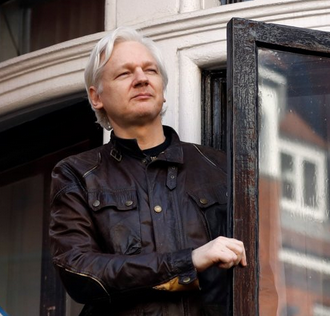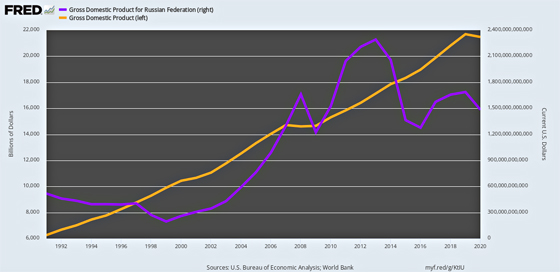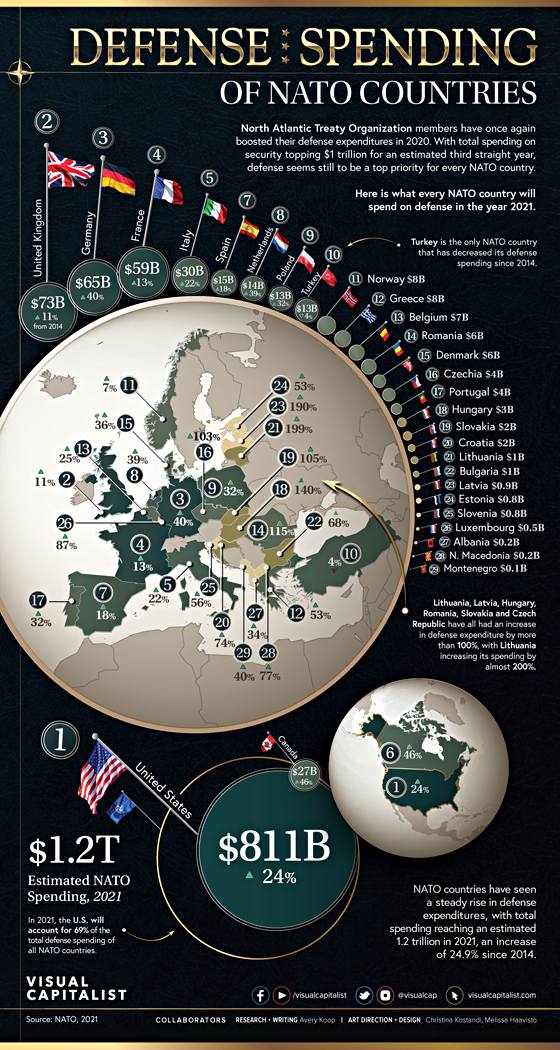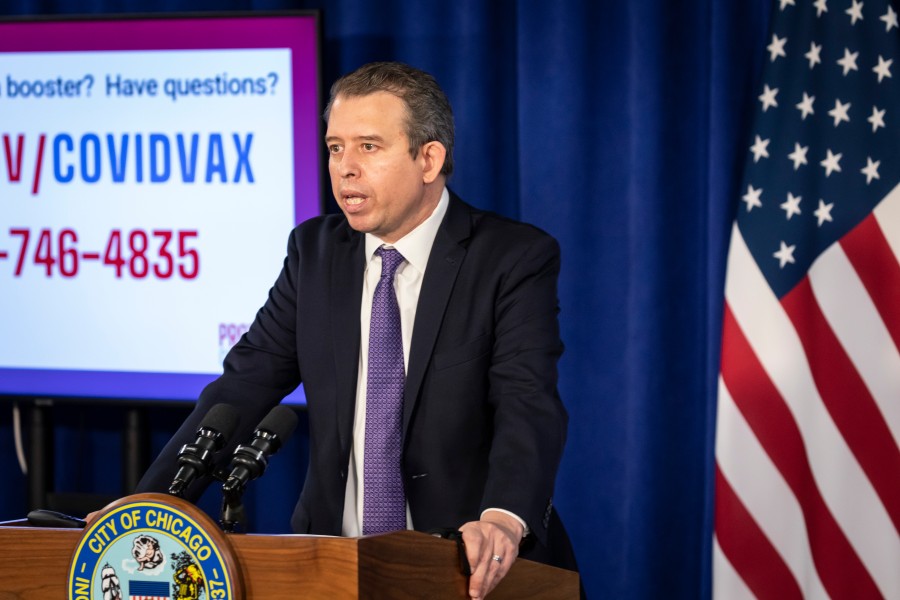Jan 4, 2022
Mexican President Andres Manuel Lopez Obrador said he had sought a pardon for Julian Assange from former U.S. President Donald Trump before he left office last year and repeated his offer of asylum for the Wikileaks founder on Monday.

Julian Assange on the balcony of the Ecuadorian embassy in London in 2017.
Last month, the Australian-born Assange moved closer to facing criminal charges in the United States for one of the biggest leaks of classified information after Washington won an appeal over his extradition in an English court.
U.S. authorities accuse Assange of 18 counts relating to WikiLeaks’ release of confidential U.S. military records and diplomatic cables which they said had put lives in danger.
Lopez Obrador reiterated the asylum offer he had made for Assange a year ago, and said that before Trump was replaced as U.S. president by Joe Biden last January, he had written him a letter recommending that Assange be pardoned.
Mexico did not receive a reply to the letter, Lopez Obrador told a regular government news conference. In an early December interview, Trump said he “very seriously” considered pardoning Assange but ultimately decided against it.
“It would be a sign of solidarity, of fraternity to allow him asylum in the country that Assange decides to live in, including Mexico,” Lopez Obrador said.
If granted asylum in Mexico, Assange would not be able to interfere in the affairs of other countries, and would not represent any sort of threat, Lopez Obrador added.
More hurdles remain before Assange could be sent to the United States after an odyssey which has taken him from teenage hacker in Melbourne to years holed up in the Ecuadorean embassy in London and then incarcerated in a maximum-security prison.
Supporters of the 50-year-old Assange cast him as an anti-establishment hero who has been persecuted by the United States for exposing U.S. wrongdoing and double-dealing across the world from Afghanistan and Iraq to Washington.
Oscar Grenfell
WSWS.ORG
Wednesday marks the grim milestone of a thousand days of Julian Assange’s continuous incarceration in Britain’s maximum-security Belmarsh Prison. In that time, the WikiLeaks publisher and journalist has only left the foreboding prison walls, located on a windswept plain on the bleak outskirts of London, to be brought before British courts that have trampled on his democratic and legal rights.
For 50 weeks, or 350 days, Assange was held on the basis of trumped-up bail offences, dating back to 2012. The charges were completely illegitimate, given that Assange’s application for political asylum had been approved and upheld by the United Nations after they were laid. Since the bail sentence elapsed, the WikiLeaks publisher has been held on remand, convicted of no crime.
His ongoing and indefinite detention serves only to facilitate a US extradition request, aimed at prosecuting Assange for exposing American war crimes, with the charges carrying a maximum-sentence of 175-years imprisonment.
The extradition request is the pseudo-legal figleaf for a US government plot to destroy Assange and WikiLeaks. This has included illegal spying on his communications with lawyers, and, as was revealed late last year, plots to kidnap or assassinate the journalist while he was a political refugee in Ecuador’s London embassy. The US case has been condemned by innumerable civil liberties and human rights organisations as a frontal assault on press freedom and a transparent political prosecution.
Despite all this, the extradition request was allowed by a complicit British High Court last November. Assange faces the prospect of continued indefinite detention in Belmarsh or being put on a plane to be handed over to the US government agencies that plotted his murder. The dire predicament underscores the urgency of building an international movement of the working class to demand Assange’s immediate freedom and the denial of extradition.
Belmarsh was established in 1991, to hold “category A” prisoners accused of violent crimes, including murder, rape and terror offences. The facility was first dubbed Britain’s Guantanamo Bay in the early 2000s, because it was used to detain inmates without charge, indefinitely and in almost total isolation, on the basis of extraordinary anti-terror laws passed after 9/11.
Since then, official and independent reports have documented high levels of violence at the prison, including on the part of staff, and frequent denials of prisoners’ basic rights.
The most recent report based on “unannounced visits” to Belmarsh by the Chief Inspector of Prisons last July and August found a deterioration in conditions on a number of fronts.
Its introduction stated: “The prison had not paid sufficient attention to the growing levels of self-harm and there was not enough oversight or care taken of prisoners at risk of suicide. Urgent action needed to be taken in this area to make sure that these prisoners were kept safe.”
The comment is particularly significant, given Assange’s documented history of medical issues, including suicidal depression, stemming from his decade-long persecution. At least four prisoners had taken their own lives since the previous “unannounced visits” in 2018.
“The 52% of prisoners who were not working were spending 23 hours a day locked in their cells while the education block, gym and library had sat empty and unused for more than a year,” the report stated, in reference to the situation facing the majority of prisoners, including Assange.
In 2018, the Chief Inspector deemed that prisoner safety was “reasonably good,” despite independent reports to the contrary. Even that official judgement has been downgraded in the 2021 report, with “outcomes for prisoners” deemed “not sufficiently good.”
A quarter of prisoners said they felt unsafe. The Inspector found: “The use of force had increased since our last inspection. Staff did not routinely activate body-worn video cameras during incidents. Due to the lack of video footage to support staff statements, we could not be assured that the use of force was necessary in all cases.”
The report goes on to document other abysmal conditions, including rusted shower blocks and cells and a lack of cleaning products provided to most inmates.
The conditions were graphically documented by Assange’s fiance Stella Moris in a Twitter post on new year’s eve. It included a minute and a half of audio recorded inside Assange’s cell, with a continuous cacophony of agitated shouting and barking dogs, presumably those of the prison guards. Moris captioned the post: “What does New Year's Eve sound like from Julian #Assange's cell in Belmarsh prison? Just like it sounded on Christmas Day and every day since he was imprisoned on 11 April 2019.”
Assange’s imprisonment has continued unabated, even as United Nations official Nils Melzer found in June 2019 that it constituted a new form of the protracted, state inflicted psychological torture to which he had been subjected over the past decade. For more than two years hundreds of doctors have repeatedly demanded that Assange be released to a university teaching hospital or freed, warning that otherwise he may die in prison. Moris has confirmed that Assange suffered a minor stroke last October. And Belmarsh authorities have repeatedly found Assange to be at risk of self-harm or suicide.
In January 2020, a British Magistrates Court blocked Assange’s extradition on narrow medical grounds, finding that it would be oppressive because his health issues, together with the draconian conditions in American prisons, would likely claim his life. It nevertheless denied a bail application, leaving Assange in the appalling conditions of Belmarsh.
At hearings on a US appeal to that verdict, the High Court similarly accepted the medical evidence provided by Assange’s defence.
The High Court, however, not only sanctioned Assange’s ongoing detention, but upheld the US appeal, allowing extradition, on the basis of fraudulent and self-contradicting “assurances” from the American authorities that the conditions of Assange’s imprisonment would not be so bad as claimed by the defence.
Late last month, Assange’s lawyers filed an application to appeal that ruling.
In a public statement, Moris explained: “On December 10th, the High Court upheld the Magistrates’ Court’s assessment, based on the evidence before her, that there was a real risk that, should Julian Assange be extradited to the United States, he would be subjected to near total isolation, including under the regimes of SAMs (Special Administrative Measures) and/or ADX, (administrative maximum prison) and that such isolation would cause his mental condition to deteriorate to such a degree that there was a high risk of suicide. These findings led the lower court to block the extradition under s. 91 of the Extradition Act, which bans “oppressive” extraditions.
“However, the High Court overturned the lower court’s decision to block the extradition, based solely on the fact that after the US lost the extradition case on January 4th 2021, the US State Department sent a letter to the UK Foreign Office containing conditional assurances in relation to Julian Assange’s placement under SAMs and ADX. The assurances letter explicitly states in points one and four that ‘the United States retains the power’ to ‘impose SAMs’ on Mr. Assange and to ‘designate Mr. Assange to ADX’ should he say or do anything since January 4, 2021 that would cause the US government to determine, in its subjective assessment, that Julian Assange should be placed under SAMs conditions and/or in ADX Florence. These conditional assurances alone were considered sufficient by the High Court to overturn the lower court’s decision.”
Not only were the assurances conditional, they were also issued by the government that has been exposed to have spied on Assange and plotted his extrajudicial kidnapping or murder. By rights, this evidence alone should have resulted in the extradition application being summarily dismissed.
Assange’s persecution, however, is supported by the British authorities, and other US allies, including the Australian government, because it is the spearhead of a broader campaign to suppress widespread anti-war sentiment and to create a precedent for political frame-ups and persecution.
Moris and other prominent Assange supporters have pointed to this broader context in recent days. They have noted the contrast between the knighthood of former British Labour Prime Minister Tony Blair, whose government participated in the invasion of Iraq, claiming at least a million lives, and the imprisonment of Assange, who exposed so many of the crimes of that illegal war.
Assange’s ongoing detention and the High Court ruling again demonstrate that his freedom can only be won through a political struggle against the entire capitalist establishment. Such a fight must be based in the working class, which is entering into struggle against the very governments spearheading Assange’s persecution.
What Julian Assange Told Us about Central America
While under house arrest in England in 2011, WikiLeaks founder Julian Assange granted an exclusive interview to El Faro’s founding director Carlos Dada and expressed hope that the leaked cables would help set a higher bar for global journalism. The organization then offloaded hundreds of thousands of U.S. government documents to local outlets around the world, including El Faro.
HAVANA TIMES – A decade ago, the controversial WikiLeaks offered an unprecedented window into the workings of the U.S. government in Central America. Now the possible extradition and trial of founder Julian Assange may set a dangerous precedent for the criminalization of commonplace news-gathering activities, press advocates say, and contradict moves by Biden to punish those seeking to harm journalists around the world.
“A Wounded Titan”
Over a decade after WikiLeaks shook the world by releasing hundreds of thousands of secret U.S. military documents and diplomatic cables, the U.K. is on the brink of extraditing the nonprofit’s embattled and enigmatic Australian founder, Julian Assange, into the hands of the U.S. justice system.
The Justice Dept., which in 2020 called the hacks “one of the largest compromises of classified information in the history of the United States,” is pressing charges including conspiracy to hack U.S. government servers and the publication of national defense information received from third parties and whistleblowers including then-U.S. soldier Chelsea Manning.
Assange has staved off extradition for over two years in a U.K. prison since the Ecuadorian Embassy in London revoked his asylum protections. As world leaders convened at Biden’s Summit for Democracy on Dec. 10, a London judge ruled to extradite Assange, dismissing his attorneys’s argument that his removal to the U.S. and conditions of confinement would push him to suicide. Barring a successful last-minute legal challenge to the extradition, and if convicted under the 1917 Espionage Act, he faces up to 175 years in prison.
“The insistent requests to extradite Assange are a negative message to the sources that have filtered confidential information” essential to the work of investigative journalists around the world, argues Jennifer Ávila, co-founder and director of independent Honduran outlet Contracorriente. “It’s a message of fear to sources.”
“The attitude of the United States is that of a wounded titan,” says El Faro director Carlos Dada of the Biden administration’s push for extradition. “It’s that of an emperor that feels humiliated and thus reacts in a damaging way.”
The leaks exposed to the world the internal communications of U.S. embassies, messages containing at times withering assessments of the politics of host countries and delicate private talks with host governments. The leaks, often cited as a catalyst of the Arab Spring, also revealed evidence of U.S. war crimes during the occupations of Afghanistan and Iraq.
“We’re changing what people accept as truth,” Assange told El Faro in 2011. Assange called the leaked diplomatic cables “a resource that everyone in the world can refer to, a sort of scaffold to make decisions on, to look at how international relations work, and to look at how the influence of big business on government works.”
While under house arrest in England in 2011, WikiLeaks founder Julian Assange granted an exclusive interview to El Faro’s founding director Carlos Dada.
WikiLeaks released thousands of U.S. cables to Central American newsrooms documenting the nation’s footprint and outlook on the isthmus. El Faro revealed, for example, left-wing former Salvadoran president Mauricio Funes’ 2009 pledge to send Salvadoran troops to Afghanistan — the troops deployed in 2013 — and the U.S. ambassador in Honduras’ fleeting efforts to prevent the 2009 military coup.
“These cables revealed the discussions held about the coup d’état and the role that the U.S. played in this historic event that unleashed an institutional crisis, one that still engulfs us today,” says Ávila.
Nicaragua’s Confidencial revealed, among dozens of other stories, failed U.S. bargaining with the newly-formed Ortega administration in 2008 for the destruction of USSR-made surface-to-air missiles.
“The cables made us see the two different faces of the United States in our countries,” says Dada of WikiLeaks’ impact in Central America. “Obviously, behind its foreign policy were its own interests,” he argues. “They consistently measured their counterparts in our countries based on how much they kept in line with those interests.”
“On the other hand,” he adds, “this will sound paradoxical, but they revealed to us a United States that was genuinely interested in human rights.”
The leaks were just the beginning of WikiLeaks’ skirmishes with the U.S. government. In the run-up to the 2016 U.S. elections, WikiLeaks filtered the communications of presidential candidate Hillary Clinton. A year later, the organization exposed a score of CIA hacking tools, leading Trump Secretary of State Mike Pompeo, the agency’s former director, to brand WikiLeaks a “non-state hostile foreign intelligence service.” In 2017, senior CIA and Trump administration officials allegedly floated options to kidnap or assassinate Assange.
A grand jury indicted Assange in 2019 in absentia for allegedly conspiring with Chelsea Manning to break into a Dept. of Defense computer. Last year U.S. prosecutors broadened the accusations to charge Assange, acting as a publisher, with espionage, “an assertive, unprecedented legal crackdown on the traditional rights and protections for publishers,” commented MSNBC’s chief legal correspondent.
“The new Trump DOJ indictment treats activities most top newspapers engage in — gathering and publishing classified material — as criminal plotting,” he added.
The New York Times editorial board concurred at the time. “The Trump administration has chosen to go well beyond the question of hacking to directly challenge the boundaries of the First Amendment,” it wrote in response to the second indictment, arguing that the Assange case “could have a chilling effect on American journalism as it has been practiced for generations.”
The top editors at The Wall Street Journal, The Washington Post, USA Today, The Guardian, and Le Monde urged the Trump administration to drop the affair, though of the papers only The Guardian has weighed in on the London court’s decision in favor of extradition.
“The U.S. has this week proclaimed itself the beacon of democracy in an increasingly authoritarian world,” wrote the British paper on the day of the ruling. President Biden has regularly argued in favor of a free press and condemned the stances of the Trump administration, and has even specifically created new sanctions to punish governments hostile to journalists, including the murderers of Jamaal Khashoggi. In Central America, the Biden White House has frequently condemned attacks against the press by regional governments.
“If Mr. Biden is serious about protecting the ability of the media to hold governments accountable,” The Guardian continued, “he should begin by dropping the charges brought against Mr. Assange.”
Press freedom advocates argue that the extradition and prosecution of a non-citizen under the 1917 U.S. Espionage Act could set a dangerous precedent. “Every regime now can point to us and say, ‘We want to extradite these journalists.’” said ACLU attorney Ben Wizner.
El Faro has also weighed in. “If Assange is extradited and convicted in the United States for making these documents public, we journalists and newsrooms are all exposed,” wrote the editorial board in 2019 following his arrest.
The Biden administration has refrained from openly commenting on the Assange case since taking office. In February, a coalition of two-dozen U.S.-based press freedom, civil liberties, and human rights organizations signed a joint letter to the Dept. of Justice calling on Biden to back down from extraditing and prosecuting Assange and arguing that the indictment “poses a grave threat to press freedom both in the United States and abroad.”
“Much of the conduct described in the indictment is conduct that journalists engage in routinely,” wrote the coalition. “The Biden administration’s Dept. of Justice now has an opportunity and an obligation to end this dangerous charade.”









 Chicago Public Schools CEO Pedro Martinez on Tuesday said he was trying to reach a "reasonable agreement" with the union on COVID-19 mitigation measures.
Chicago Public Schools CEO Pedro Martinez on Tuesday said he was trying to reach a "reasonable agreement" with the union on COVID-19 mitigation measures.



